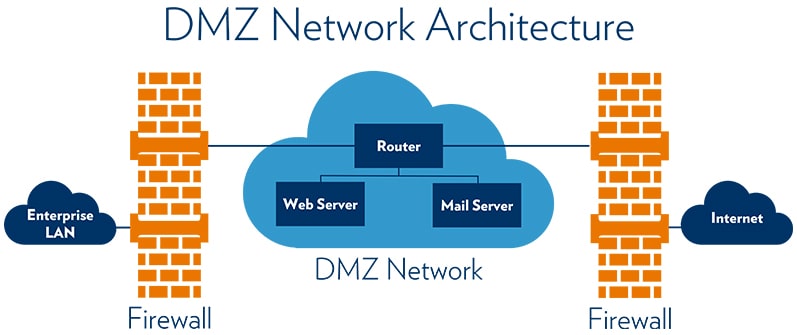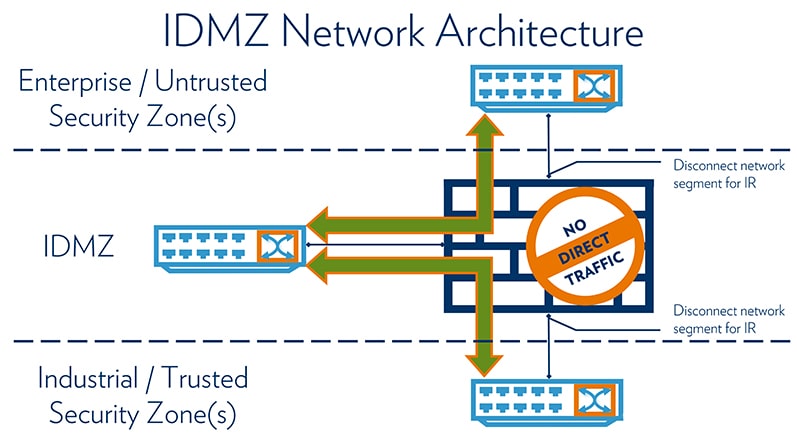
Blog > Automation > What is an IDMZ?
What is an IDMZ?
2/1/22 | Eric Haff, Rexel Technical Consultant

Blog > Automation > What is an IDMZ?
2/1/22 | Eric Haff, Rexel Technical Consultant
You may have heard of a DMZ (demilitarized zone) for networks, but are you familiar with the term IDMZ (industrial demilitarized zone)? If you work in an industrial setting, an IDMZ might be the cybersecurity component you need to protect your employees and your productivity.
Let’s start with some history and definitions.
The idea of using a firewall to separate a network into different zones has been around for a long time. Back in the day, critical business servers (e.g., email, eCommerce, and websites) were hosted locally and needed to be accessible to the public. Many techniques were developed to allow traffic to these resources without having access to the internal business network. One of these techniques was to use a DMZ. The DMZ was the middle point between your company and the rest of the public internet. This protects your company’s internal networked resources from being vulnerable while still serving information to the world. It looked a lot like this:

While most of the services we mentioned above are now hosted in the cloud, forgoing the need for a DMZ, the concept was very effective.
Modern network defense strategies usually protect users in multiple ways, including firewalls, antivirus software, intrusion detection, and two-factor authentication. But, as we all know, sometimes this isn’t enough, and bad actors get in. Nowadays, many manufacturing companies are introducing new technologies to help streamline and improve their business. Most, if not all, of these cybersecurity strategies will be used on internal networks. These systems are relied on to control large equipment, report data, and even provide safety for employees.
To protect these critical manufacturing resources, companies have started segmenting their network into new zones with added security. And so, the industrial demilitarized zone or IDMZ was born. Much like its counterpart the DMZ, the IDMZ is the middle zone between two networks that allows specific traffic to flow between those networks. The only difference being that, instead of separating your company network from the public internet, it separates your critical production systems from your everyday corporate network.
An IDMZ looks something like this:

With this added layer of protection, companies can rest easy knowing that if someone were to unknowingly become compromised while surfing the web at their desk, it will not affect the safety of their employees or the production of their products.
If you think that your company would benefit from having an IDMZ, a good starting point is finding the right partner. Rockwell Automation® has been a leader in industrial automation and networking technology for decades. They understand the needs of the manufacturing and enterprise environments and have dedicated resources to help you design, implement, and manage your industrial zones.
Not sure if your environment is a good fit for an IDMZ? Horizon Solutions and Rockwell Automation have assessments that will help you understand where your network and cybersecurity strategy stands today. The unfortunate truth is many companies choose to act after they have a breach or critical failure. This leads to loss of production, painstaking recovery, and even employee injury. Start today and let us help you create a strategy that will secure you now and in the future.